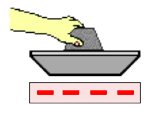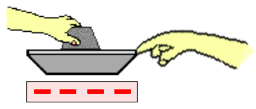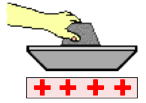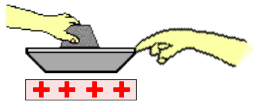There are some fundamental principles that one will have to understand and use in order to successfully analyze all seven Name That Charge situations. Those fundamental principles are ...
- Electrons are negatively charged and protons are positively charged.
- Only electrons are able to move during electrostatic charging processes.
- Opposites attract and likes repel. Thus, electrons are attracted to positively-charged objects and repelled by negatively-charged objects and by each other.
- If a neutral object gains electrons, then it becomes negatively charged. If a neutral object loses electrons, then it becomes positively charged.



